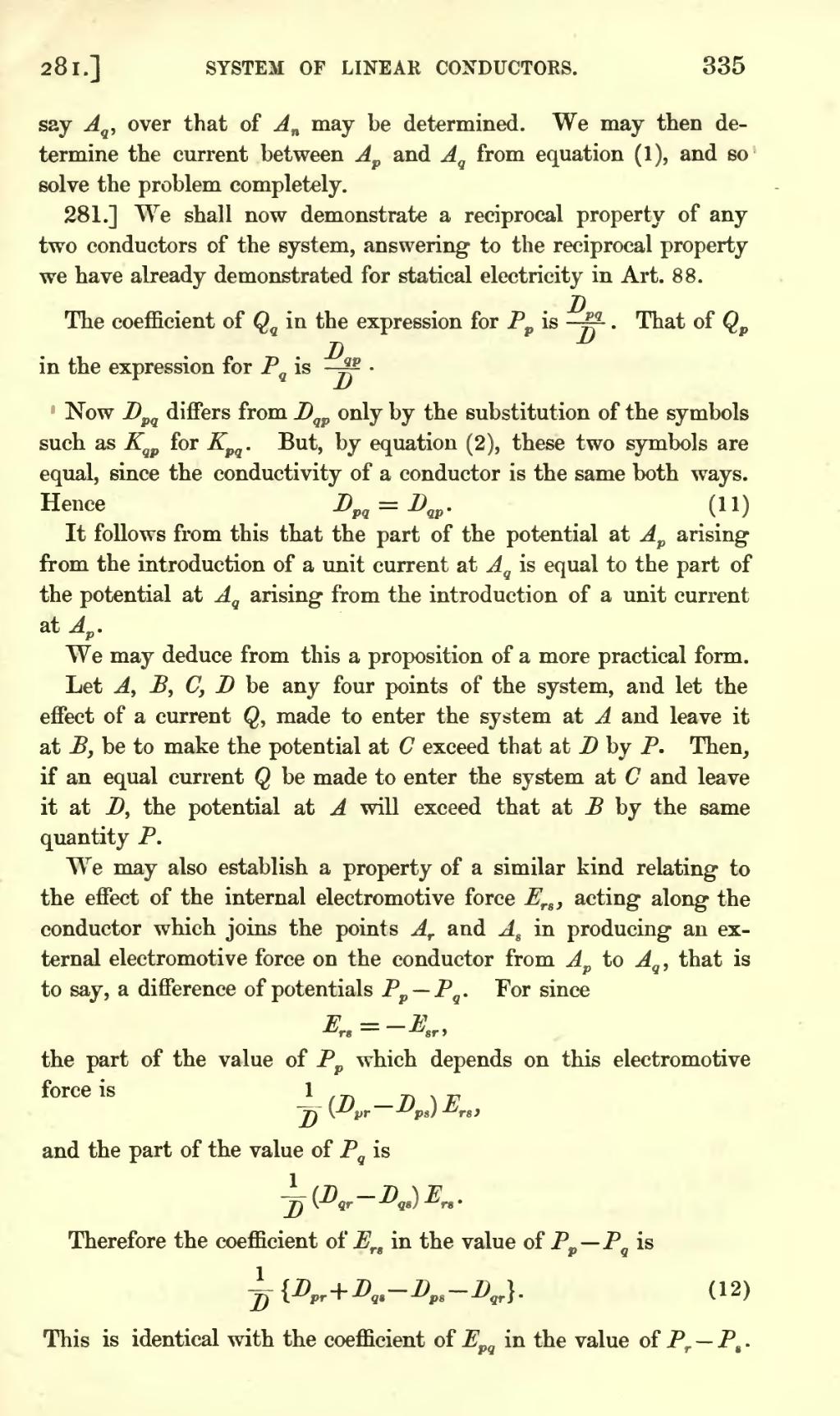say over that of may be determined. We may then determine the current between and from equation (1), and so solve the problem completely.
281.] We shall now demonstrate a reciprocal property of any two conductors of the system, answering to the reciprocal property we have already demonstrated for statical electricity in Art. 88.
The coefficient of in the expression for is That of in the expression for is
Now differs from only by the substitution of the symbols such as for . But, by equation (2), these two symbols are equal, since the conductivity of a conductor is the same both ways.
| Hence | (11) |
It follows from this that the part of the potential at arising from the introduction of a unit current at is equal to the part of the potential at arising from the introduction of a unit current at
We may deduce from this a proposition of a more practical form.
Let be any four points of the system, and let the effect of a current made to enter the system at and leave it at be to make the potential at exceed that at by . Then, if an equal current be made to enter the system at and leave it at the potential at will exceed that at by the same quantity .
We may also establish a property of a similar kind relating to the effect of the internal electromotive force acting along the conductor which joins the points and in producing an external electromotive force on the conductor from to that is to say, a difference of potentials For since
the part of the value of which depends on this electromotive force is
and the part of the value of is
Therefore the coefficient of in the value of is
| (12) |
This is identical with the coefficient of in the value of






































